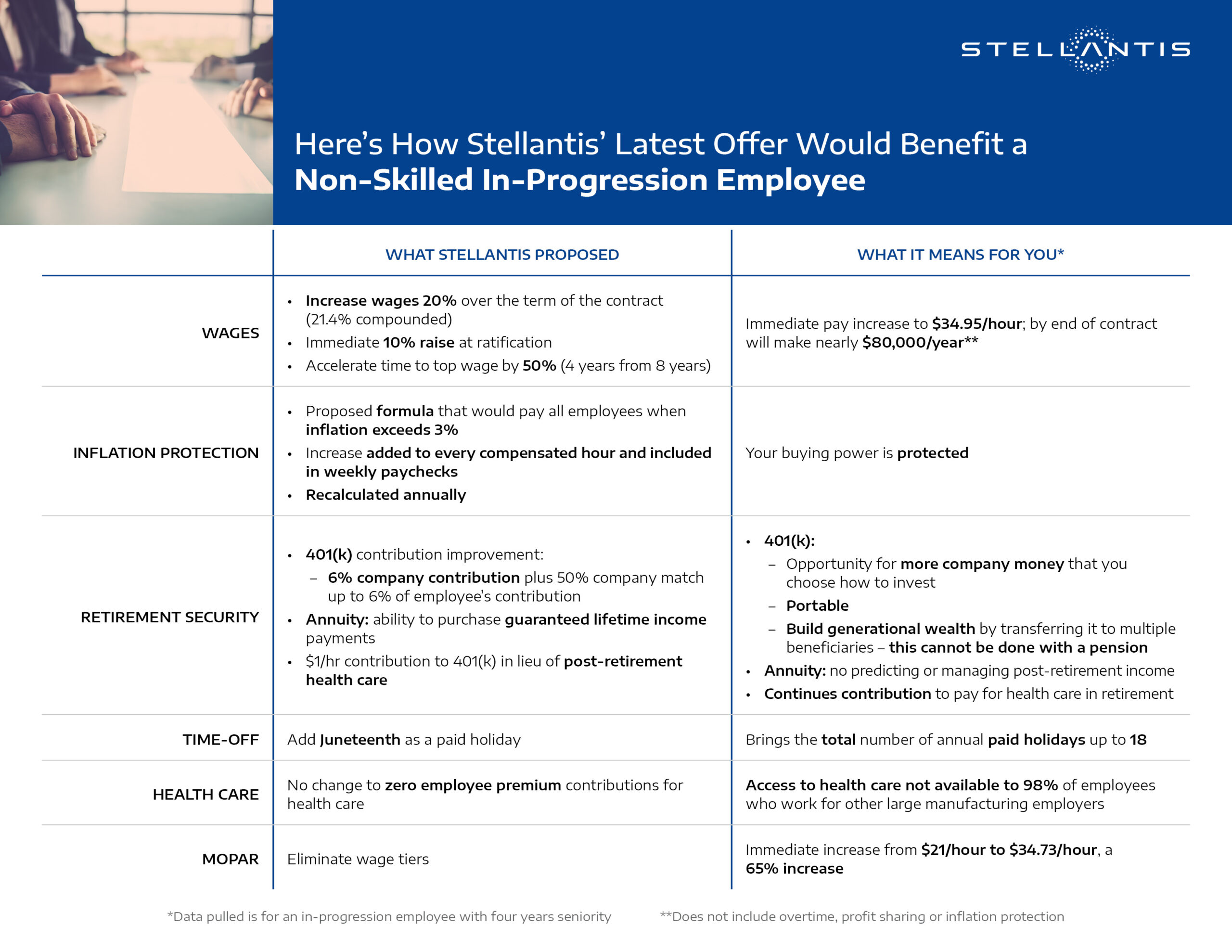Information Regarding the Negotiations
Frequently Asked Questions
General FAQs
Get answers to your labor negotiation questions.
The National Labor Relations Act gives workers the right to bargain collectively with their employer over wages, hours and working conditions through a union that the workers choose.
- What does that mean?
Unions and employers must bargain in good faith about wages, hours and other terms and conditions of employment until they agree on a labor contract or reach a stand-off or “impasse.” If negotiations reach an impasse, an employer can impose terms and conditions so long as it proposed in good faith to the union before the impasse was reached.
Once a contract is in place, neither party may modify its terms without the other party’s agreement, absent extraordinary circumstances. If a contract expires before the next contract is in place, almost all the terms of the expired contract continue while the parties continue to bargain.
The current FCA US LLC/UAW contract is a four-year agreement that was ratified in 2019. The Company is negotiating this year to come to agreement on a new contract that will take effect once the current UAW contract expires on Sept. 14, 2023. (Note: References to FCA are not a mistake. While the merger of FCA and Groupe PSA in 2021 created the global company Stellantis, legally in the United States the company is still FCA and a part of the Stellantis group of companies).
Stellantis opened negotiations with the UAW on July 13, 2023.
The company’s contract with the UAW is set to expire on Thursday, Sept. 14, 2023, at 11:59 p.m.
All of Stellantis’ assembly, stamping and powertrain plants in the U.S. are covered by this contract. In addition, Stellantis has represented employees working at the Technology Center in Auburn Hills, Michigan, Mopar parts distribution centers, proving grounds and FCA Transport.
In the United States, Stellantis produces the following vehicles:
- Dodge Durango
- Jeep® Grand Cherokee, Grand Cherokee L and Grand Cherokee 4xe
- Jeep® Wrangler and Wrangler 4xe
- Jeep® Gladiator
- Wagoneer/Wagoneer L
- Grand Wagoneer/Grand Wagoneer L
- Ram 1500
There are approximately 43,000 UAW-represented employees in the United States which includes full-time, salaried bargaining unit and supplemental employees.
The Company has an extensive Communications plan in place to help keep all employees informed during contract negotiations. These channels include use of the Company Intranet (The 411 on The Hub), email communication (for those with access), a dedicated website (stellantisnegotiations2023.com), and recorded phone messages and text messages.
The Company participates in “pattern bargaining” in the U.S. Companies that participate in pattern bargaining use elements agreed to by the lead company with the Union as the framework for their agreement. Typically, the pattern focuses on certain economic items. What is agreed to at each bargaining table is often very similar, however, similar does not always mean the same. Each automaker has its differences and the Company wants to reach an agreement that is tailored to its specific size, structure and business needs.
The transition from traditional internal combustion engines (ICE) to electric motors is one of the most fundamental and far-reaching transitions in the automotive industry’s history – and Stellantis intends to be a leader in providing sustainable mobility solutions that support our goal of achieving carbon neutrality by 2038. In the company’s Dare Forward 2030 strategic plan, Stellantis has made a commitment to reaching +50% battery electric vehicle (BEV) sales in the U.S. and Canada by 2030.
To be a leading, successful automaker in this transition, Stellantis must protect affordability for middle class buyers and the stability of its operations for all stakeholders. At 40% greater cost than conventional technology, passing the additional cost of electrification on to consumers not only puts EV affordability at risk, but it also puts greater emphasis on operating our plants more efficiently. If Stellantis passes the increased cost on to the consumer, the company may risk losing half of its customer base or if it sells vehicles at a loss, that puts the Company in jeopardy, which could require restructuring. The decisions Stellantis makes during negotiations must ensure the Company’s future competitiveness in today’s global market.
©2025 Stellantis Negotiations 2023 All Rights Reserved.
